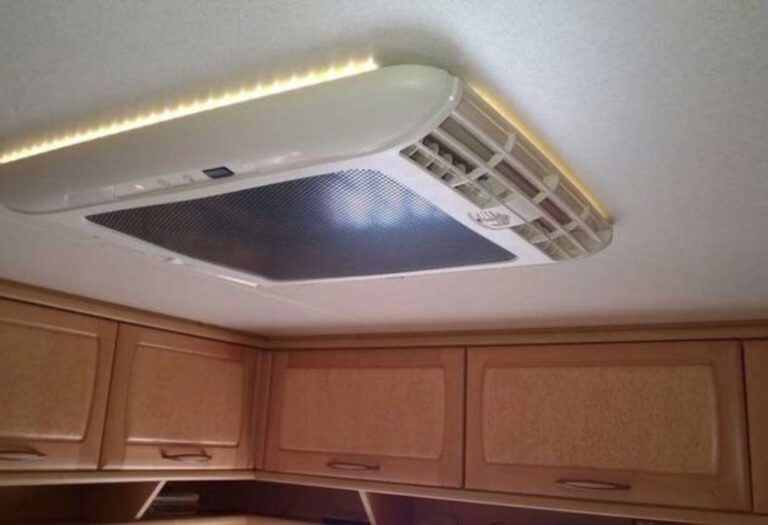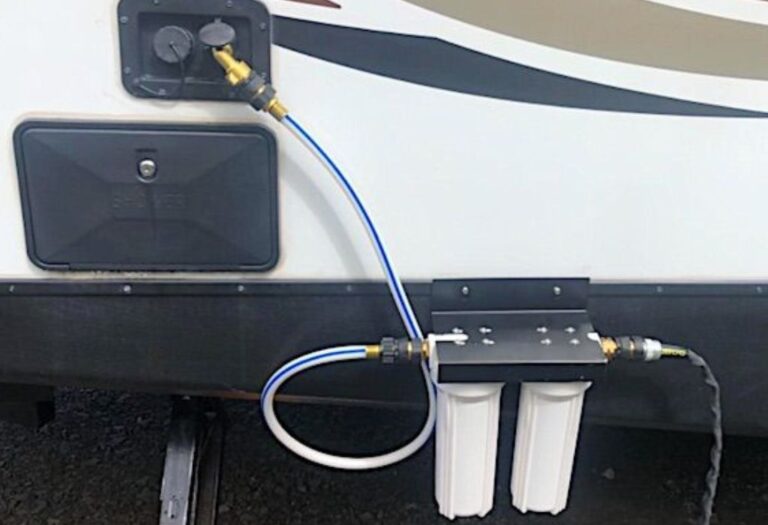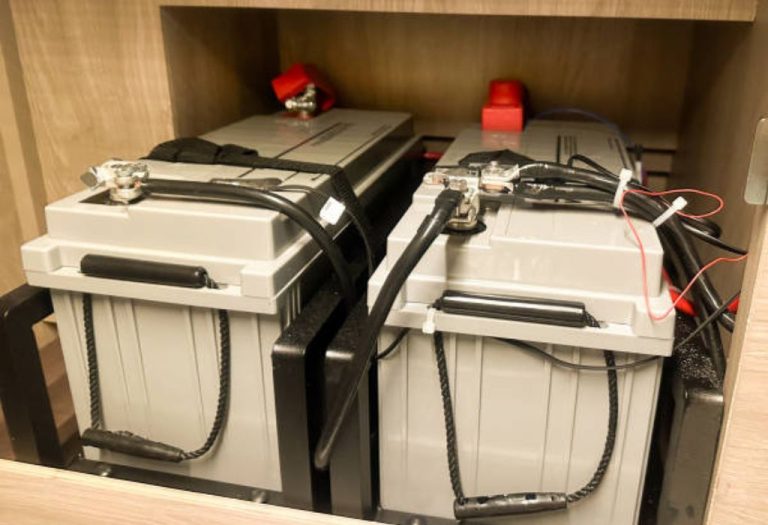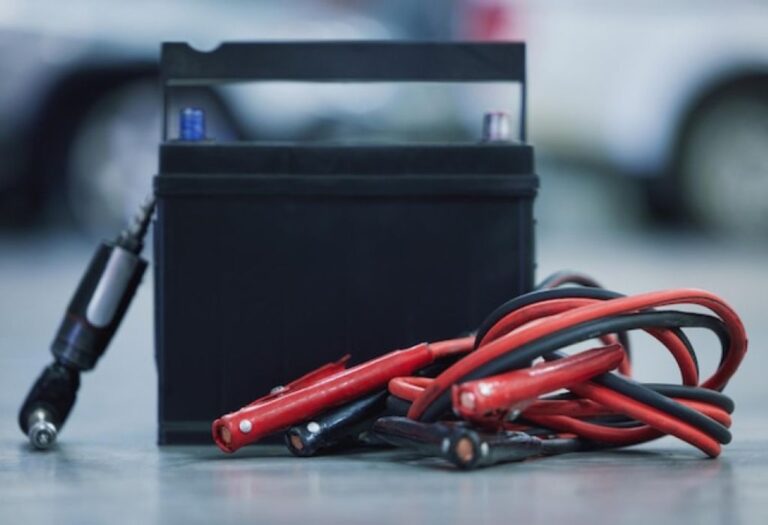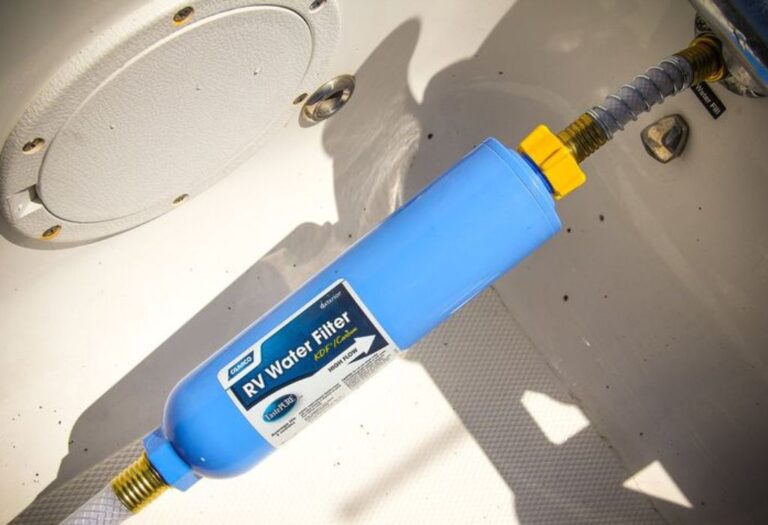How to Hook Up Water to an RV at Home Easily
Many RV owners return home after a trip and wonder how to keep their vehicle ready for the next adventure. The challenge often begins with a simple but critical question — how to hook up water to an RV at home safely and efficiently.
Without a proper water connection, everyday tasks like washing dishes or showering become inconvenient. In some cases, connecting to household plumbing incorrectly can cause leaks, contamination, or even serious damage to the RV’s water system.
Nearly 40% of new RV owners experience plumbing damage within the first year due to improper water hookups (RVIA). A well-planned connection prevents these problems and maintains steady pressure, clean flow, and long-term reliability.
Although the process may sound complicated, it’s simple once you understand the components of the water system. Installing a dedicated home hookup can save up to 70% of setup time before each trip
This guide explains every detail — from choosing tools to avoiding leaks, managing pressure, and maintaining water quality — so you can confidently connect water to your RV at home.
What “Hooking Up Water to an RV at Home” Really Means
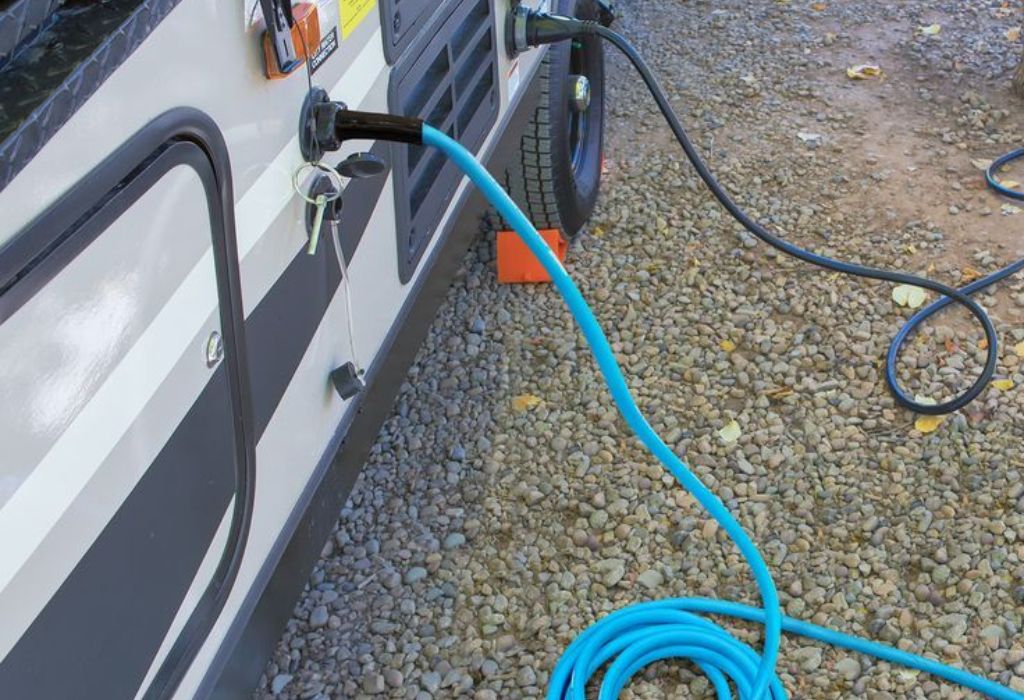
At first glance, hooking up water to an RV seems like attaching a hose and turning on a tap. But it’s more than that — it’s about creating a safe, pressurized connection that replicates a campground’s city water system while protecting both your home and RV plumbing.
When done correctly, this setup allows full use of sinks, showers, and toilets inside your RV without needing bottled water or constant refills. It also turns your RV into a functional guest suite or home office.
What is the difference between “city water” and the “freshwater tank”?
The city water connection supplies continuous pressurized water directly from an external source. The freshwater tank stores water for use through the onboard pump when you’re off-grid. (EscapeForum)
Why should you hook up water to your RV at home?
A home hookup allows convenient cleaning, testing of appliances, and system sanitization before trips.
What connection points should you look for on your RV?
Most RVs feature two: a city water inlet for direct pressure connection and a freshwater fill port for tank refills.
Does connecting water at home change how your plumbing works?
Yes. You must regulate pressure, use potable hoses, and ensure proper sealing to avoid contamination or leaks.
When is it ideal to use the home water hookup?
It’s best for long-term parking, pre-trip preparation, winterization, or when the RV serves as temporary accommodation.
Common Problems and Risks When Hooking Up Water to an RV at Home
Improper RV water hookups can cause more harm than good. If the connection lacks regulation or uses the wrong equipment, even minor mistakes can lead to serious plumbing issues.
High water pressure, leaks, and contamination are the most frequent concerns. Recognizing these risks helps prevent damage and costly repairs.
What happens if water pressure is too high?
Excess pressure can burst hoses or damage fittings. Always use a regulator to keep pressure between 40–60 psi (RVRepairClub).
What if the wrong hose or connector is used?
Using a non-potable or low-quality hose may introduce chemicals or bacteria. Always choose a drinking-water-safe hose.
Are there back-flow or check-valve concerns?
Yes. Without a proper check valve, pressurized water could backflow into your home’s plumbing or overfill the RV’s tank.
What about freezing or inactivity?
In cold climates, water left inside hoses can freeze and crack pipes. Always drain lines or winterize before long inactivity.
What are the most common mistakes beginners make?
Beginners often forget to use a pressure regulator, attach the hose to the wrong inlet, or leave water on while away from home.
Step-by-Step Guide: How to Hook Up Water to an RV at Home
Connecting water to your RV at home requires a few key tools and careful steps. Once set up properly, the system will work as smoothly as any campground hookup.
Follow this simple process to ensure safety and efficiency.
What tools and materials are needed?
You’ll need a potable water hose, pressure regulator, optional inline filter, check valve, and a clean spigot or dedicated hose bib. (RVshare)
How to install a dedicated water spigot or line for the RV at home?
Install a separate water line or tee connection near your parking area. Ensure it connects to potable water and includes a shut-off valve. (JustAnswer)
How to connect the hose from home to the RV city-water inlet?
Turn off water at the spigot. Attach the regulator to the faucet, connect the hose to the regulator, and tighten securely to the RV inlet. Open slowly to pressurize the system.
How to verify correct operation after connection?
Run a sink or shower for a few seconds. Check fittings and hose ends for leaks and ensure consistent pressure throughout the system.
How to disconnect and maintain the system when not in use?
Turn off the water, detach the hose, drain residual water, and store it in a shaded area to prevent bacteria growth.
Special Considerations for Home-Hooked RV Plumbing
Hooking up an RV to home water involves more than pressure regulation. You must also account for water quality, seasonal changes, and system longevity.
Can the home water hookup fill the RV’s freshwater tank instead of direct supply?
Yes. Many RVs have a valve that switches between city water and tank-fill mode. Ensure you select the correct setting before turning on the water.
What about water filtration and water quality at home?
Even municipal water can contain sediments or chlorine. Using an inline water filter ensures cleaner, safer water. (RVshare)
How to winterize or shut off when the RV is parked long-term at home?
Drain the system, disconnect hoses, shut off the spigot, and apply RV antifreeze if temperatures drop below freezing.
What if home supply pressure fluctuates or is too high?
Install a regulator and optional pressure gauge to maintain consistent flow between 40–60 psi (ForestRiverForums).
Should the RV water pump be turned off when using home hookup?
Yes. When connected to external city water, turn off the pump to avoid back pressure and noise. (EscapeForum)
Cost, Time-Saving, and Safety Benefits of Home Water Hookups
Setting up an RV water line at home has long-term benefits. It saves time during every trip, reduces mechanical strain, and ensures cleaner water access.
How much time can a dedicated home hookup save?
Owners report reducing setup time by half or more when using a pre-installed water line (RVshare).
What safety improvements does a regulated home hookup provide?
It prevents over-pressure leaks, contamination, and unexpected plumbing failures.
How does cost compare to campground hookups in the long run?
Although installation has an initial cost, the long-term savings in maintenance and convenience far outweigh it.
How does fixture lifespan improve with a dedicated water line?
Consistent water pressure and clean flow extend the life of pumps, faucets, and pipes.
Are there environmental or utility benefits?
Yes. A leak-free, regulated system conserves water and minimizes waste from worn hoses and fittings.
Troubleshooting and Maintenance Tips for Home RV Water Hookups

Even well-maintained systems require occasional inspection. Regular checks can prevent problems before they turn into expensive repairs.
What should be done if water pressure drops or fluctuates?
Inspect the regulator, verify home spigot output, and ensure the hose isn’t kinked or clogged.
What if there is a leak at the RV city-water inlet?
Shut off water, replace damaged O-rings or washers, and hand-tighten fittings without over-torqueing.
How often should the potable hose or filter be replaced?
Inspect hoses seasonally and replace every two to three years. Replace filters based on manufacturer guidelines or local water quality.
What to inspect before winter or long-term storage?
Drain all water, disconnect hoses, cap inlets, and store components in a warm area. Use insulation wraps or RV antifreeze if freezing is possible.
What signs indicate a back-flow or check-valve failure?
If your freshwater tank fills while connected to city water, or the pump behaves erratically, the check valve may have failed. (Sprinter-Source)
Conclusion
Hooking up water to an RV at home doesn’t need to be intimidating. With the right tools, safe connections, and consistent pressure control, you can enjoy clean running water year-round.
A proper home hookup protects your plumbing, saves time, and extends your RV’s lifespan. Before your next trip, review your materials list, inspect fittings, and perform a quick pressure test.
Once you’ve set it up correctly, you’ll never worry about leaks or inconsistent pressure again. Your RV will always be ready for comfort — whether on the road or parked at home.
I’m David R. Coleman, the founder, lead writer, and lifelong tool enthusiast behind GarageToolPro.com. With years of experience in automotive repair, woodworking, and home DIY projects, I created this platform to share practical tips, detailed tool reviews, and step-by-step guides that help mechanics, hobbyists, and homeowners get the job done right the first time.


